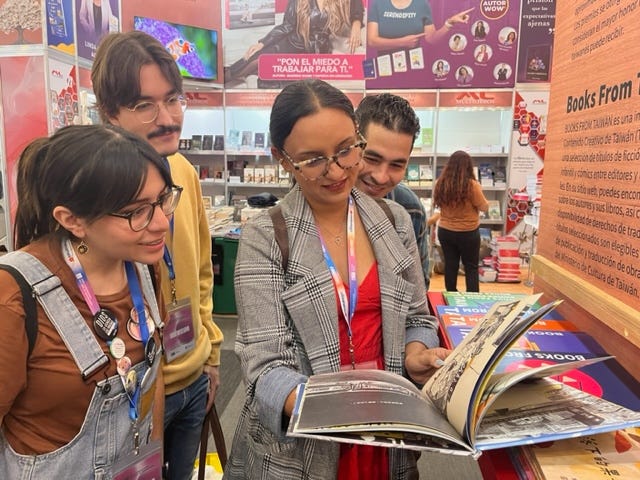A trip to the Guadalajara Book Fair, the largest Spanish-speaking festival in the world; plus, meditations on the children’s book industry
Also an event (today!) at Taiwan Literature Base, and book club on Taiwan Travelogue
Hello all!
If you’re in Taipei today (Sunday, 12/15), I’ll be in conversation with Hilda Hoy from 15:00-17:00 at Taiwan Literature Base. We’ll be talking about language and writing; all are welcome!
Last week I was in Guadalajara, promoting Taiwanese children’s and comic books at Feria Internacional del Libro de Guadalajara (FIL), the biggest book fair in Latin America. I was exhilarated by the soulful atmosphere: from artists to volunteers, from professional editors to teenage manga fans, people were kind, generous, curious, and warm.

Among the people I met were a teacher who got funding from the Mexican government to spend two years reading to children in a hospital; a book and art fair director from León, Me…
Keep reading with a 7-day free trial
Subscribe to A Broad and Ample Road to keep reading this post and get 7 days of free access to the full post archives.


